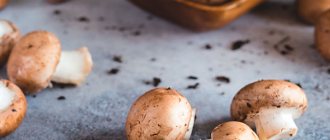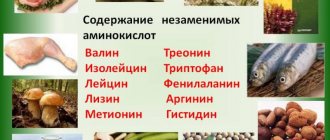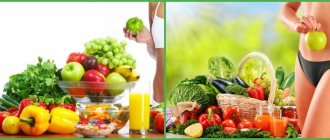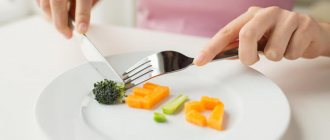The role of vitamin D in the body
Vitamin D (D) is a fat-soluble organic compound necessary for the proper functioning of the immune and nervous systems, the development of bone and muscle tissue, and to control cell growth.
By supporting a healthy immune system, vitamin D protects the body from infections.
Vitamin D helps absorb calcium and phosphorus, strengthening bones and teeth. It is very important for older people, as it prevents the development of osteoporosis. Recent studies have shown that this same vitamin promotes the absorption of iron, magnesium and zinc.
High doses of vitamin D are used in the treatment of osteomalacia, renal osteodystrophy and renal failure, rheumatoid arthritis, multiple sclerosis, chronic obstructive pulmonary disease, bronchitis, and asthma. It is believed that it can relieve PMS, as well as help cope with skin diseases such as psoriasis, keratosis, lupus, vitiligo and scleroderma.
It is recommended to be taken for diseases with phosphorus deficiency - Fanconi syndrome and familial hypophosphoatemia - and calcium deficiency - hypoparathyroidism and pseudohypoparateriosis.
Vitamin D is called the “sunshine vitamin”
Deficiency and overdose
Calcium is stored in the porous structure of long bones. In case of insufficient intake of the mineral from food, the body “goes” to mobilize the compound from bone tissue, as a result of which demineralization of the pelvic bones, spine and lower extremities occurs. Signs of calcium deficiency:
- pain in joints, bones, teeth;
- muscle weakness;
- brittle nails;
- increased calcium levels in the blood;
- skin rashes;
- rapid pulse;
- muscle spasms;
- convulsions;
- numbness of the limbs;
- the appearance of microcracks in tooth enamel;
- nervousness;
- fatigue;
- hypertension;
- pale face;
- insomnia;
- decreased mental abilities;
- lack of coordination;
- growth retardation, rickets (in children);
- spinal deformity, frequent bone fractures;
- tooth decay;
- allergic reactions;
- decreased blood clotting;
- heavy menstrual flow.
In 80% of cases, hypocalcemia is asymptomatic, which leads to the development of serious pathologies: osteoporosis, kidney stone formation, hypertension, osteochondrosis. To prevent these problems, it is important to identify and eliminate in advance the factors that provoke macronutrient deficiency in the body.
Causes of calcium deficiency:
- lack of foods containing a beneficial compound in the diet;
- impaired absorption of the element in the intestine due to dysbiosis or the absence of the lactase enzyme, which breaks down milk protein;
- excess lead, zinc, magnesium, iron, potassium, phosphorus, sodium in the body;
- chronic diseases of the digestive tract (pancreatitis, diabetes mellitus, renal failure, gastric or duodenal ulcers);
- diseases of the thyroid gland, in which the synthesis of the hormone calcitonin, which controls calcium metabolism, is impaired;
- increased consumption of “bone-forming” nutrients due to stressful situations, smoking, physical activity, pregnancy, breastfeeding;
- excessive consumption of drinks that inhibit the absorption of minerals in the intestines (coffee, alcohol, carbonated water, energy tonics);
- deficiency of vitamin D in the diet, especially when following vegetarianism or a raw food diet;
- long-term use of laxatives and diuretics, which “wash out” the building mineral from the body.
In addition, calcium metabolism is disrupted due to excessive excretion of the compound in the urine (idiopathic hypercalciuria), low absorption of the substance in the intestine (intestinal malabsorption), the formation of kidney stones (calcium nephrolithiasis), hyperfunction of the parathyroid glands, and hypertension.
To eliminate the symptoms of hypocalcemia, you need to enrich your daily diet with calcium-containing products or complex dietary supplements, the main active component of which is the missing macronutrient. When using medications, consult your doctor first.
In the process of drawing up a nutritional plan, keep in mind that daily consumption of more than 2500 milligrams of the mineral against the background of calcium metabolism disorders leads to intense calcification of bones, blood vessels and internal organs, as a result of which persistent hypercalcemia develops.
Symptoms of excess compound in the body:
- thirst;
- nausea;
- vomit;
- loss of appetite;
- weakness;
- frequent urination;
- decreased smooth muscle tone;
- arrhythmia;
- discomfort in the epigastric region;
- increased concentration of calcium in urine and blood;
- angina and bradycardia;
- decreased cognitive function;
- formation of stones in the kidneys and bladder;
- gout.
In some cases, hypercalcemia occurs as a result of hereditary pathologies of the thyroid gland, in particular multiple endocrine neoplasia, and sometimes as a result of malignant neoplasms.
Deficiency and excess of vitamin D in the body
A lack of vitamin D can lead to serious health problems. Deficiency can cause rickets and osteoporosis, diseases characterized by soft, brittle bones that often break and become deformed. It can cause diabetes, arthritis, hypertension, autoimmune diseases, and depression. Modern researchers are inclined to believe that vitamin D deficiency is one of the factors contributing to the development of certain types of cancer.
The body does not store vitamin D reserves for more than 60 days.
You can assume that you have a vitamin D deficiency if you get tired easily, experience muscle weakness, frequent headaches, have trouble sleeping and unmotivated weight gain.
There are certain risk groups, those who most often have a deficiency of the “sunshine vitamin”. These include:
- pregnant and lactating women;
- children under 6 months of age whose mothers did not take vitamin D supplements during pregnancy;
- children from 6 months to 5 years;
- people over 50 years old;
- people with darker skin tones, because... it absorbs sunlight more slowly;
- people who spend most of their time indoors.
If you are concerned about your vitamin D levels, get a blood test.
Since vitamin D is fat-soluble, it can accumulate in liver cells, which means hypervitaminosis D is also possible. An excess of this compound will, first of all, lead to the body absorbing too high doses of calcium, and this can cause the deposition of kidney stones or even provoke heart attack. Excessive amounts of vitamin D also contribute to polyuria—excessive urine production—and extreme weight loss.
Recommended daily dose of vitamin D
The required daily dose of vitamin D depends on age. Infants under one year of age need about 400 IU per day, children and adults up to 70 years of age need up to 600 IU per day daily, and older people should increase the dose of the vitamin to 800 IU.
Of course, if you have vitamin deficiency or hypervitaminosis D, then the daily dose should be increased or decreased.
How does a deficiency of this component manifest itself in the body?
Vitamin D content in foods can reduce the risk of deficiency. Therefore, special attention should be paid to nutrition. Signs of a lack of vitamin D in the blood are the following symptoms
:
chronic fatigue;- decreased vision;
- problems with stool;
- caries;
- nervousness;
- convulsions;
- sweating;
- loss of muscle mass;
- brittleness of nails, hair, bones;
- frequent colds.
The youngest also experience slow growth, prolonged closure of the fontanel, and low body weight.
If you notice any of the above symptoms, you should get tested for 25-hydroxyvitamin D
. An indicator of less than 20-30 ng/ml indicates that there is a lack of calciferol.
Seafood rich in vitamin D
Seafood is especially rich in the “sunshine” vitamin. Fatty fish varieties are recognized as one of its best sources. So 100 grams of canned salmon contains about 90% of the required daily dose. Wild salmon will contain several times more vitamin D than salmon raised in cages. Fish that lived in cold water will be preferable to those that lived in warm waters. Thus, Alaskan salmon contains 5 times more vitamin D than the same salmon caught in the southern latitudes of the Atlantic Ocean.
Fish is one of the best sources of vitamin D
You will also find significant amounts of the vitamin in the following types of fish:
- Atlantic herring (up to 310 IU per 100g);
- reef perch or snapper (up to 400 IU per 100g);
- mackerel (more than 400 IU per 100g);
- canned sardines (up to 270 IU per 100g);
- halibut (more than 150 IU per 100g);
- tuna (more than 120 IU per 100g).
The vitamin D content in cod liver is so high that a food supplement - cod liver oil - is specially made from it. One capsule of this oil contains not only more than 1000 IU of valuable vitamin, but also equally useful omega-3 fatty acids, as well as vitamin A.
Red and black caviar can provide you with up to 230 IU of vitamin D per one hundred gram serving, and in six medium oysters you will find up to 70% of the recommended daily intake. One hundred grams of shrimp will contain about 150 IU of vitamin E. They can be recommended for those who are trying to reduce the fat content in their diet.
What affects calcium absorption
Calcium is a difficult-to-digest macronutrient, since its absorption requires the presence of the following substances in the body: magnesium, phosphorus, potassium, zinc, manganese, silicon, chromium, vitamins D, etc. Moreover, an excess amount of the first two compounds prevents its full absorption.
The optimal ratio of calcium, magnesium and phosphorus in food or dietary supplements is 2: 1: 1. Considering that the mineral “transforms” into a bioavailable form only under the influence of gastric juice, taking it and alkaline substances that neutralize hydrochloric acid, including carbohydrates, leads to to reduce the absorption of the element in the intestines. At the same time, the combined use of the compound with rhubarb, spinach, parsley, cabbage, sorrel, radish and currants potentiates the formation of oxalate kidney stones.
Remember, calcium is well absorbed from dairy products due to the optimal ratio of nutrients and the presence of lactic acid bacteria in such products. Moreover, to increase the bioavailability of the mineral, it is permissible to use healthy fats. However, it is important to take into account that an excess or lack of lipids in the diet prevents the complete absorption of the “bone” substance, since in the first case there are not enough bile acids to break it down, and in the second - fatty acids.
Best materials of the month
- Coronaviruses: SARS-CoV-2 (COVID-19)
- Antibiotics for the prevention and treatment of COVID-19: how effective are they?
- The most common "office" diseases
- Does vodka kill coronavirus?
- How to stay alive on our roads?
The optimal ratio of calcium to fat per serving of food is 1:100.
Meat and eggs
Although meat is an excellent source of a variety of nutrients, it contains relatively little vitamin D. Only certain cuts of pork and beef liver can help satisfy a person’s daily need for this vital vitamin. Pork can contain up to 60 IU of vitamin D per 100 g, and liver - up to 50 IU.
Vitamin D should be “looked for” in pork and beef liver
Small doses of vitamin D are also found in eggs, but only in the yolks. The yolks of two medium eggs will contain up to 90 IU of the beneficial organic compound.
Vitamin D3 content in foods
Table of percentage of vitamin D3 in food. The chart shows the percentage of vitamin D3 from the daily requirement, calculated based on a 100 g serving of the product.
| № | Quantity | Share of daily value per 100 g | |
| 1 | Salted mackerel | 25.2 mcg | 155,1% |
| 2 | Raw carp | 24.7 mcg | 152,0% |
| 3 | Raw eel | 23.3 mcg | 143,4% |
| 4 | Baked sockeye salmon | 16.7 mcg | 102,8% |
| 5 | Baked swordfish | 16.6 mcg | 102,2% |
| 6 | Raw mackerel | 16.1 mcg | 99,1% |
| 7 | Raw sockeye salmon | 14.1 mcg | 86,8% |
| 8 | Raw swordfish | 13.9 mcg | 85,5% |
| 9 | Baked omul | 13.3 mcg | 81,8% |
| 10 | Baked pink salmon | 13.0 mcg | 80,0% |
| 11 | Baked sturgeon | 12.9 mcg | 79,4% |
| 12 | Caviar, red or black, raw | 12.1 mcg | 74,5% |
| 13 | Baked coho salmon | 11.3 mcg | 69,5% |
| 14 | Pink salmon raw | 10.9 mcg | 67,1% |
| 15 | Chicken egg yolk in powder form | 10.4 mcg | 64,0% |
| 16 | Raw sturgeon | 10.3 mcg | 63,4% |
| 17 | Snapper (berix) raw | 10.2 mcg | 62,8% |
| 18 | Coho salmon raw | 9.0 mcg | 55,4% |
| 19 | Canned horse mackerel | 7.3 mcg | 44,9% |
| 20 | Milk Protein Supplement Powder | 7.0 mcg | 43,1% |
| 21 | Baked halibut | 5.8 mcg | 35,7% |
| 22 | Seabass raw | 5.6 mcg | 34,5% |
| 23 | Baked herring | 5.4 mcg | 33,2% |
| 24 | Raw egg yolk | 5.4 mcg | 33,2% |
| 25 | Turkey fat, raw | 4.8 mcg | 29,5% |
| 26 | Canned sardine in oil | 4.8 mcg | 29,5% |
| 27 | Raw chicken fat | 4.8 mcg | 29,5% |
| 28 | Duck fat raw | 4.8 mcg | 29,5% |
| 29 | Halibut raw | 4.7 mcg | 28,9% |
| 30 | Herring raw | 4.2 mcg | 25,8% |
| 31 | Trout raw | 3.9 mcg | 24,0% |
| 32 | Baked tilapia | 3.7 mcg | 22,8% |
| 33 | Fried flounder | 3.5 mcg | 21,5% |
| 34 | Pork lard (without layer) raw | 3.1 mcg | 19,1% |
| 35 | Tilapia raw | 3.1 mcg | 19,1% |
| 36 | Salted herring | 2.8 mcg | 17,2% |
| 37 | Raw flounder | 2.8 mcg | 17,2% |
| 38 | Cheese Queso Fresco | 2.7 mcg | 16,6% |
| 39 | Pork fat (pork fat), raw | 2.5 mcg | 15,4% |
| 40 | Raw pike | 2.5 mcg | 15,4% |
| 41 | Raw pork ribs (ribs) | 2.3 mcg | 14,2% |
| 42 | Smoked herring | 2.2 mcg | 13,5% |
| 43 | Boiled chicken egg (hard-boiled) | 2.2 mcg | 13,5% |
| 44 | Fried chicken egg | 2.2 mcg | 13,5% |
| 45 | Raw chicken egg | 2.0 mcg | 12,3% |
| 46 | Baked whiting | 1.8 mcg | 11,1% |
| 47 | Raw goose egg | 1.7 mcg | 10,5% |
| 48 | Egg omelette | 1.7 mcg | 10,5% |
| 49 | Canned anchovies (in oil) | 1.7 mcg | 10,5% |
| 50 | Raw duck egg | 1.7 mcg | 10,5% |
| 51 | Raw mullet | 1.5 mcg | 9,2% |
| 52 | Merlang raw | 1.4 mcg | 8,6% |
| 53 | Sea bass (red) baked | 1.4 mcg | 8,6% |
| 54 | Raw quail egg | 1.4 mcg | 8,6% |
| 55 | Turkey liver raw | 1.3 mcg | 8,0% |
| 56 | Goat milk | 1.3 mcg | 8,0% |
| 57 | Ryazhenka | 1.3 mcg | 8,0% |
| 58 | Beef liver, stewed or fried | 1.2 mcg | 7,4% |
| 59 | Sea bass (red) raw | 1.2 mcg | 7,4% |
| 60 | Beef liver raw | 1.2 mcg | 7,4% |
| 61 | Baked pork loin | 1.2 mcg | 7,4% |
| 62 | Tuna canned in its own juice | 1.2 mcg | 7,4% |
| 63 | Boiled beef kidneys | 1.1 mcg | 6,8% |
| 64 | Beef kidneys raw | 1.1 mcg | 6,8% |
| 65 | Raw turkey skin | 1.1 mcg | 6,8% |
| 66 | Raw pollock | 1.0 mcg | 6,2% |
| 67 | Cooked stewed pork | 1.0 mcg | 6,2% |
| 68 | Kefir | 1.0 mcg | 6,2% |
| 69 | Salami | 0.9 mcg | 5,5% |
| 70 | Raw smelt | 0.8 mcg | 4,9% |
| 71 | Raw beef fat | 0.7 mcg | 4,3% |
| 72 | Dry muesli (with dried fruits and nuts) | 0.7 mcg | 4,3% |
| 73 | Ham | 0.7 mcg | 4,3% |
| 74 | Pork ribs (country) raw | 0.7 mcg | 4,3% |
| 75 | Croaker raw | 0.7 mcg | 4,3% |
| 76 | Smoked sausage | 0.7 mcg | 4,3% |
| 77 | Raw lamb fat | 0.7 mcg | 4,3% |
| 78 | Pork neck (neck) raw | 0.7 mcg | 4,3% |
| 79 | Shark meat raw | 0.6 mcg | 3,7% |
| 80 | Fried cooked pork | 0.6 mcg | 3,7% |
| 81 | Colby cheese | 0.6 mcg | 3,7% |
| 82 | Monterey cheese | 0.6 mcg | 3,7% |
| 83 | Cheddar cheese | 0.6 mcg | 3,7% |
| 84 | Cheese Fontina | 0.6 mcg | 3,7% |
| 85 | Munster cheese | 0.6 mcg | 3,7% |
| 86 | Gruyère cheese | 0.6 mcg | 3,7% |
| 87 | Pork knuckle, raw shank | 0.5 mcg | 3,1% |
| 88 | Turkey gizzards raw | 0.5 mcg | 3,1% |
| 89 | Raw pork ham and rump | 0.5 mcg | 3,1% |
| 90 | Powdered milk | 0.5 mcg | 3,1% |
| 91 | Processed cheese | 0.5 mcg | 3,1% |
| 92 | Raw pork loin | 0.5 mcg | 3,1% |
| 93 | Cooked minced pork (20% fat) | 0.5 mcg | 3,1% |
| 94 | Cheese Limburger | 0.5 mcg | 3,1% |
| 95 | Gouda cheese | 0.5 mcg | 3,1% |
| 96 | Edam cheese | 0.5 mcg | 3,1% |
| 97 | Blue cheeses | 0.5 mcg | 3,1% |
| 98 | Parmesan cheese | 0.5 mcg | 3,1% |
| 99 | Pecorino Romano cheese | 0.5 mcg | 3,1% |
| 100 | Provolone cheese | 0.5 mcg | 3,1% |
| 101 | Mexican cheese Anejo | 0.5 mcg | 3,1% |
| 102 | Mexican Cheese Queso Chihuahua | 0.5 mcg | 3,1% |
| 103 | Mexican cheese Oaxaca | 0.5 mcg | 3,1% |
| 104 | Brie cheese | 0.5 mcg | 3,1% |
| 105 | Cheese Port-Salut | 0.5 mcg | 3,1% |
| 106 | Goat cheese | 0.5 mcg | 3,1% |
| 107 | Roasted turkey (meat and skin of the whole carcass) | 0.4 mcg | 2,5% |
| 108 | Raw pork, meat with fat | 0.4 mcg | 2,5% |
| 109 | Turkey heart raw | 0.4 mcg | 2,5% |
| 110 | Chees Feta | 0.4 mcg | 2,5% |
| 111 | Mozzarella cheese | 0.4 mcg | 2,5% |
| 112 | Camembert cheese | 0.4 mcg | 2,5% |
| 113 | Boiled beef tongue | 0.4 mcg | 2,5% |
| 114 | Turkey meat (turkey meat) baked (whole carcass meat) | 0.3 mcg | 1,8% |
| 115 | Turkey thigh (fillet) raw | 0.3 mcg | 1,8% |
| 116 | Baked turkey thigh (fillet) | 0.3 mcg | 1,8% |
| 117 | Boiled turkey breast (fillet) | 0.3 mcg | 1,8% |
| 118 | Pork tenderloin raw | 0.3 mcg | 1,8% |
| 119 | Baked turkey drumstick (without skin) | 0.3 mcg | 1,8% |
| 120 | Raw turkey, meat and skin of the whole carcass | 0.3 mcg | 1,8% |
| 121 | Raw pork carbonate | 0.3 mcg | 1,8% |
| 122 | Boiled or stewed turkey neck | 0.3 mcg | 1,8% |
| 123 | Turkey neck raw | 0.3 mcg | 1,8% |
| 124 | Ice cream | 0.2 mcg | 1,2% |
| 125 | Chocolate ice cream | 0.2 mcg | 1,2% |
| 126 | Turkey meat (turkey meat), raw, whole carcass meat | 0.2 mcg | 1,2% |
| 127 | Beef thin edge (Striploin) raw | 0.2 mcg | 1,2% |
| 128 | Beef thick edge raw | 0.2 mcg | 1,2% |
| 129 | Beef ribs raw | 0.2 mcg | 1,2% |
| 130 | Beef brisket raw | 0.2 mcg | 1,2% |
| 131 | Beef neck (Chuck Eye Roll) raw | 0.2 mcg | 1,2% |
| 132 | Condensed milk | 0.2 mcg | 1,2% |
| 133 | Sour cream | 0.2 mcg | 1,2% |
| 134 | Boiled chicken skin | 0.2 mcg | 1,2% |
| 135 | Baked chicken thighs (meat with skin) | 0.2 mcg | 1,2% |
| 136 | Baked chicken wings | 0.2 mcg | 1,2% |
| 137 | Cooked chicken feet | 0.2 mcg | 1,2% |
| 138 | Frog legs raw | 0.2 mcg | 1,2% |
| 139 | Cooked pheasant | 0.2 mcg | 1,2% |
| 140 | Boiled beef heart | 0.1 mcg | 0,6% |
| 141 | Baked goose | 0.1 mcg | 0,6% |
| 142 | Breast milk | 0.1 mcg | 0,6% |
| 143 | Raw beef, meat without fat | 0.1 mcg | 0,6% |
| 144 | Beef rump, raw rump | 0.1 mcg | 0,6% |
| 145 | Beef tenderloin (Tenderloin) raw | 0.1 mcg | 0,6% |
| 146 | Beef shoulder raw | 0.1 mcg | 0,6% |
| 147 | Beef flank, peritoneum, flank, raw | 0.1 mcg | 0,6% |
| 148 | Turkey drumstick, raw, without skin | 0.1 mcg | 0,6% |
| 149 | Turkey breast (fillet) raw | 0.1 mcg | 0,6% |
| 150 | Pork baked in the oven | 0.1 mcg | 0,6% |
| 151 | Duck (duck meat) raw meat, without skin | 0.1 mcg | 0,6% |
| 152 | Fried chicken | 0.1 mcg | 0,6% |
| 153 | Ground beef, raw, 20% fat | 0.1 mcg | 0,6% |
| 154 | Baked chicken legs (meat with skin) | 0.1 mcg | 0,6% |
| 155 | Baked chicken drumstick (meat with skin) | 0.1 mcg | 0,6% |
| 156 | Chicken drumstick, stewed or boiled (meat with skin) | 0.1 mcg | 0,6% |
| 157 | Raw chicken drumstick, meat with skin | 0.1 mcg | 0,6% |
| 158 | Chicken drumstick (without skin), stewed or boiled | 0.1 mcg | 0,6% |
| 159 | Cooked chicken back (meat with skin) | 0.1 mcg | 0,6% |
| 160 | Ricotta cheese | 0.1 mcg | 0,6% |
| 161 | Chicken thighs, boiled or stewed (meat with skin) | 0.1 mcg | 0,6% |
| 162 | Raw chicken thighs, meat with skin | 0.1 mcg | 0,6% |
| 163 | Skinless chicken thighs, boiled or stewed | 0.1 mcg | 0,6% |
| 164 | Chicken wings, boiled or stewed | 0.1 mcg | 0,6% |
| 165 | Raw chicken wings | 0.1 mcg | 0,6% |
| 166 | Boiled or stewed chicken legs (meat with skin) | 0.1 mcg | 0,6% |
| 167 | Chicken legs (legs) raw, meat with skin | 0.1 mcg | 0,6% |
| 168 | Baked chicken | 0.1 mcg | 0,6% |
| 169 | Boiled or stewed chicken | 0.1 mcg | 0,6% |
| 170 | Chicken raw chicken meat | 0.1 mcg | 0,6% |
| 171 | Duck (duck meat) baked (meat without skin) | 0.1 mcg | 0,6% |
| 172 | Cooked beef (meat without fat) | 0.1 mcg | 0,6% |
| 173 | Veal cooked | 0.0 µg | 0,0% |
| 174 | Raw mussels | 0.0 µg | 0,0% |
| 175 | Raw shellfish | 0.0 µg | 0,0% |
| 176 | Cooked scallop | 0.0 µg | 0,0% |
| 177 | Abalone raw | 0.0 µg | 0,0% |
| 178 | Scallop raw | 0.0 µg | 0,0% |
| 179 | Shiitake mushrooms, cooked | 0.0 µg | 0,0% |
| 180 | Raw oyster mushrooms | 0.0 µg | 0,0% |
| 181 | Raw chanterelle mushrooms | 0.0 µg | 0,0% |
| 182 | Maitake mushrooms raw | 0.0 µg | 0,0% |
| 183 | Bison meat raw | 0.0 µg | 0,0% |
| 184 | Fried portobello mushrooms | 0.0 µg | 0,0% |
| 185 | Morel mushrooms, raw | 0.0 µg | 0,0% |
| 186 | Enoki mushrooms raw | 0.0 µg | 0,0% |
| 187 | Boiled octopus | 0.0 µg | 0,0% |
| 188 | Octopus raw | 0.0 µg | 0,0% |
| 189 | Raw champignons | 0.0 µg | 0,0% |
| 190 | Fried champignons | 0.0 µg | 0,0% |
| 191 | Brown raw champignons | 0.0 µg | 0,0% |
| 192 | Beef tripe raw | 0.0 µg | 0,0% |
| 193 | Yogurt | 0.0 µg | 0,0% |
| 194 | Cooked wild boar meat | 0.0 µg | 0,0% |
| 195 | Beef shank raw | 0.0 µg | 0,0% |
| 196 | Raw crayfish | 0.0 µg | 0,0% |
| 197 | Dried shiitake mushrooms | 0.0 µg | 0,0% |
| 198 | Shiitake mushrooms raw | 0.0 µg | 0,0% |
| 199 | Boiled crayfish | 0.0 µg | 0,0% |
| 200 | Raw portobello mushrooms | 0.0 µg | 0,0% |
| 201 | Stewed turkey gizzards | 0.0 µg | 0,0% |
| 202 | Raw pork stomach | 0.0 µg | 0,0% |
| 203 | Cooked goat meat | 0.0 µg | 0,0% |
| 204 | Raw squid | 0.0 µg | 0,0% |
| 205 | Cooked turkey heart | 0.0 µg | 0,0% |
| 206 | Butter | 0.0 µg | 0,0% |
| 207 | Cow's milk 2% fat | 0.0 µg | 0,0% |
| 208 | Boiled crab | 0.0 µg | 0,0% |
| 209 | Pork intestines cooked | 0.0 µg | 0,0% |
| 210 | Boiled pork legs | 0.0 µg | 0,0% |
| 211 | Baked chicken breast (skinless) | 0.0 µg | 0,0% |
| 212 | Raw oysters | 0.0 µg | 0,0% |
| 213 | Chicken breast, boiled or stewed (without skin) | 0.0 µg | 0,0% |
| 214 | Chicken breast fillet, raw meat, without skin | 0.0 µg | 0,0% |
| 215 | Chicken liver stewed or boiled | 0.0 µg | 0,0% |
| 216 | Chicken liver raw | 0.0 µg | 0,0% |
| 217 | Bison meat cooked | 0.0 µg | 0,0% |
| 218 | Beaver meat cooked | 0.0 µg | 0,0% |
| 219 | Swiss cheese | 0.0 µg | 0,0% |
| 220 | Chicken gizzards, boiled or stewed | 0.0 µg | 0,0% |
| 221 | Lobsters (lobsters, spiny lobsters) boiled | 0.0 µg | 0,0% |
| 222 | Canned champignons | 0.0 µg | 0,0% |
| 223 | Cream cheese | 0.0 µg | 0,0% |
| 224 | Boiled or stewed champignons | 0.0 µg | 0,0% |
| 225 | Lobsters (lobsters, spiny lobsters) raw | 0.0 µg | 0,0% |
| 226 | Raw snails | 0.0 µg | 0,0% |
| 227 | Baked oysters | 0.0 µg | 0,0% |
| 228 | Cooked bear meat | 0.0 µg | 0,0% |
| 229 | Dried jellyfish | 0.0 µg | 0,0% |
| 230 | Light beef boiled or stewed | n/a | 0,0% |
| 231 | Boiled mussels | n/a | 0,0% |
| 232 | Red beans (Kidney) sprouted fresh | n/a | 0,0% |
| 233 | Honey | n/a | 0,0% |
| 234 | Almond oil | n/a | 0,0% |
| 235 | Raw bear meat | n/a | 0,0% |
| 236 | Fresh almonds | n/a | 0,0% |
| 237 | Boiled variegated beans (Pinto) | n/a | 0,0% |
| 238 | Molasses | n/a | 0,0% |
| 239 | Roasted almonds | n/a | 0,0% |
| 240 | Fresh sprouted variegated beans (Pinto) | n/a | 0,0% |
| 241 | Menek raw | n/a | 0,0% |
| 242 | Baked pollock | n/a | 0,0% |
| 243 | Boiled pink beans | n/a | 0,0% |
| 244 | Boiled shellfish | n/a | 0,0% |
| 245 | Boiled black beans | n/a | 0,0% |
| 246 | Dried goji berries | n/a | 0,0% |
| 247 | Molva baked | n/a | 0,0% |
| 248 | Boiled black-eyed beans | n/a | 0,0% |
| 249 | Fresh blueberries | n/a | 0,0% |
| 250 | Carrots raw (fresh) | n/a | 0,0% |
| 251 | Hamburger (McDonald's) | n/a | 0,0% |
| 252 | Boiled carrots | n/a | 0,0% |
| 253 | Onion rings | n/a | 0,0% |
| 254 | Molva raw | n/a | 0,0% |
| 255 | Fried croaker | n/a | 0,0% |
| 256 | Raw seaweed | n/a | 0,0% |
| 257 | Hot Dog | n/a | 0,0% |
| 258 | Canned carrot juice | n/a | 0,0% |
| 259 | Boiled pigeon peas | n/a | 0,0% |
| 260 | Abalone cooked | n/a | 0,0% |
| 261 | Cheeseburger (McDonald's) | n/a | 0,0% |
| 262 | Dried carrots | n/a | 0,0% |
| 263 | Peas boiled in water (ripe) | n/a | 0,0% |
| 264 | Feijoa fresh | n/a | 0,0% |
| 265 | Canned carrots | n/a | 0,0% |
| 266 | Fresh green peas | n/a | 0,0% |
| 267 | Cooked monkfish | n/a | 0,0% |
| 268 | Fennel, raw (fruit or root) | n/a | 0,0% |
| 269 | Frozen carrots | n/a | 0,0% |
| 270 | Fresh sprouted peas | n/a | 0,0% |
| 271 | Nutmeg spice, ground | n/a | 0,0% |
| 272 | Fennel seeds | n/a | 0,0% |
| 273 | Canned green peas | n/a | 0,0% |
| 274 | Fresh medlar | n/a | 0,0% |
| 275 | Physalis fresh | n/a | 0,0% |
| 276 | Table mustard, paste | n/a | 0,0% |
| 277 | Fresh mint | n/a | 0,0% |
| 278 | Fresh vegetable physalis | n/a | 0,0% |
| 279 | Mustard oil | n/a | 0,0% |
| 280 | Fresh peppermint | n/a | 0,0% |
| 281 | Jujube (Chinese date) fresh | n/a | 0,0% |
| 282 | Mustard seeds ground mustard | n/a | 0,0% |
| 283 | Baked burbot | n/a | 0,0% |
| 284 | Dates Deglet nur | n/a | 0,0% |
| 285 | Monkfish raw | n/a | 0,0% |
| 286 | Fresh pomegranate | n/a | 0,0% |
| 287 | Energy drink Monster Energy | n/a | 0,0% |
| 288 | Dates Majul | n/a | 0,0% |
| 289 | Peanut flour | n/a | 0,0% |
| 290 | Canned pomegranate juice | n/a | 0,0% |
| 291 | Energy drink Red Bull | n/a | 0,0% |
| 292 | Fresh pistachios | n/a | 0,0% |
| 293 | White whole grain corn flour | n/a | 0,0% |
| 294 | Fresh grapefruit | n/a | 0,0% |
| 295 | Naranjilla frozen | n/a | 0,0% |
| 296 | Roasted pistachios (no salt) | n/a | 0,0% |
| 297 | Chickpea flour | n/a | 0,0% |
| 298 | Fresh grapefruit juice | n/a | 0,0% |
| 299 | Baked trout | n/a | 0,0% |
| 300 | Second grade wheat flour | n/a | 0,0% |
| 301 | Walnut | n/a | 0,0% |
| 302 | Nori seaweed, raw | n/a | 0,0% |
| 303 | Hazelnut oil | n/a | 0,0% |
| 304 | Premium wheat flour | n/a | 0,0% |
| 305 | Walnut oil | n/a | 0,0% |
| 306 | Dry chickpeas | n/a | 0,0% |
| 307 | Fresh hazelnuts | n/a | 0,0% |
| 308 | Wheat flour | n/a | 0,0% |
| 309 | Buckwheat boiled in water (buckwheat porridge) | n/a | 0,0% |
| 310 | Boiled chickpeas | n/a | 0,0% |
| 311 | Roasted hazelnuts | n/a | 0,0% |
| 312 | First grade wheat flour | n/a | 0,0% |
| 313 | Dry green buckwheat | n/a | 0,0% |
| 314 | Oat oil | n/a | 0,0% |
| 315 | Baked milkfish (hanos) | n/a | 0,0% |
| 316 | Buckwheat flour | n/a | 0,0% |
| 317 | Oat flour | n/a | 0,0% |
| 318 | Sweet yeast dough buns | n/a | 0,0% |
| 319 | Soy flour | n/a | 0,0% |
| 320 | Wood mushroom raw | n/a | 0,0% |
| 321 | Unheated oat bran | n/a | 0,0% |
| 322 | Multigrain bread | n/a | 0,0% |
| 323 | Oatmeal cookies | n/a | 0,0% |
| 324 | Breadcrumbs | n/a | 0,0% |
| 325 | Dry baked muesli (granola), crispy, with honey | n/a | 0,0% |
| 326 | Oat bran bread | n/a | 0,0% |
| 327 | Multigrain crispbread | n/a | 0,0% |
| 328 | Oat bread | n/a | 0,0% |
| 329 | Fresh breadfruit | n/a | 0,0% |
| 330 | Antelope meat raw | n/a | 0,0% |
| 331 | Sheep milk | n/a | 0,0% |
| 332 | Cottonseed oil | n/a | 0,0% |
| 333 | Fresh cucumbers | n/a | 0,0% |
| 334 | Horseradish, ready to eat | n/a | 0,0% |
| 335 | Raw beefalo meat | n/a | 0,0% |
| 336 | Fresh dandelion leaves | n/a | 0,0% |
| 337 | Fresh persimmon | n/a | 0,0% |
| 338 | Beaver meat raw | n/a | 0,0% |
| 339 | Fresh black persimmon (sapota) | n/a | 0,0% |
| 340 | Raw wild boar meat | n/a | 0,0% |
| 341 | Baked grouper | n/a | 0,0% |
| 342 | Baked river perch | n/a | 0,0% |
| 343 | Chicory root, raw | n/a | 0,0% |
| 344 | Fresh pear | n/a | 0,0% |
| 345 | Venison cooked | n/a | 0,0% |
| 346 | Instant chicory (ready-made coffee) | n/a | 0,0% |
| 347 | Canned pear juice (nectar) | n/a | 0,0% |
| 348 | Canned olives | n/a | 0,0% |
| 349 | Fresh chicory leaves | n/a | 0,0% |
| 350 | Canned apricots | n/a | 0,0% |
Dairy
One glass of milk can provide about 20% of the body's daily requirement for vitamin D, but only if you are dealing with whole milk with a fat content of 2.5%. Since vitamin D is fat-soluble, skimming milk results in loss of the valuable organic compound. Moreover, skim milk additionally fortified with vitamin D will not benefit you, since the beneficial substance cannot be absorbed.
Whole milk is a good source of vitamin D
Butter, yogurt, sour cream, and cottage cheese made from whole milk can become a source of vitamin D. 100 g of 4.5% fat yogurt can contain up to 100 IU of vitamin D. Cheese contains little vitamin D, from 6 to 30 IU, and the harder the cheese, the more useful compounds it will contain.
Calcium deficiency
A lack of this substance in the human body can lead to the following consequences:
- Deterioration of dental condition;
- Increased bone fragility;
- Thinning of the walls of blood vessels and an increased risk of infection;
- Development of osteoporosis.
You can compensate for calcium deficiency with the help of certain foods, for example, by eating tofu, spinach, cilantro or almonds.
Also, a balanced diet can be supplemented with a pharmacy vitamin complex and compliance with three rules:
- Reduce salt intake;
- Reduce coffee consumption;
- Reduce your consumption of animal proteins.
The fact is that these products contribute to the leaching of calcium from the body.
Plant sources of vitamin D
Mushrooms are one of the most valuable sources of vitamin D for those following a vegan diet. But we are talking only about specially processed mushrooms. Champignons are irradiated with quartz lamps several hours before harvesting and the vitamin D content in them increases from a modest 30-40 IU to an impressive 400 IU per 100 g serving.
Bread is often fortified with vitamin D
Neither grains nor nuts naturally contain significant doses of vitamin D. However, manufacturers often fortify cereals and whole grain bread with useful substances, including vitamin D. Thus, one serving of fortified oatmeal can contain up to 160 IU of this organic compound.





![Selenium [converted]-04-1.jpg](https://idiev.ru/wp-content/uploads/selen-preobrazovannyj-04-1-jpg-330x140.jpg)


